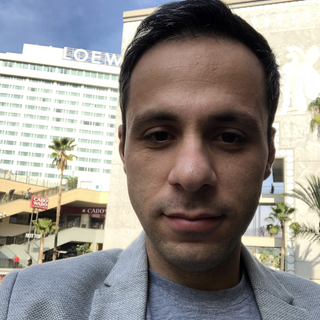Android Developer Interview Questions
The Android ecosystem, with its vast user base and diverse device range, demands developers of the highest caliber. This guide aims to equip hiring managers with interview questions that get to the heart of what it takes to build standout Android applications. Delve into both technical intricacies and broader development practices to identify the ideal developer for your mobile projects.
What is Android?
Answer: Android is an open-source, Linux-based operating system designed for mobile devices such as smartphones and tablets.
2.
Name the four main components of Android applications.
Answer: The four main components are Activities, Services, Broadcast Receivers, and Content Providers.
3.
What is an Activity?
Answer: An Activity represents a single screen with a user interface in an Android app.
4.
What's the difference between onPause() and onStop() in Android activity lifecycle?
Answer: onPause() is called when the activity is partially obscured, but onStop() is called when the activity is completely hidden.
5.
What is an Intent?
Answer: An Intent is a messaging object used to request an action from another component, like starting an activity or a service.
6.
Explain the difference between Explicit and Implicit Intents.
Answer: Explicit Intents specify the component to start by its name, while Implicit Intents don't name a specific component but instead declare a general action to perform.
7.
What is a Fragment?
Answer: A Fragment represents a behavior or a portion of the user interface in an Activity and can be reused across multiple activities.
8.
What's the importance of the XML-based layouts?
Answer: XML-based layouts provide a means to separate the UI design from the code logic, making it more readable and maintainable.
9.
What is AndroidManifest.xml?
Answer: AndroidManifest.xml is a configuration file for the Android app that provides essential information about the app to the Android system.
10.
Describe the use of the adb tool.
Answer: adb (Android Debug Bridge) is a versatile command-line tool allowing developers to communicate with an Android device for debugging and other development actions.
11.
What is ANR?
Answer: ANR stands for Application Not Responding, which is a dialog shown when an app has been unresponsive for a long period.
12.
What's the difference between dp, sp, pt, and px in Android?
Answer: dp (density-independent pixel) adjusts for screen density. sp (scale-independent pixel) is for font sizes and scales with user's font settings. pt is points, and px represents actual pixels on the screen.
13.
What are Loaders in Android?
Answer: Loaders provide a way to asynchronously load data in activity or fragment, keeping the UI responsive.
14.
How is multi-threading achieved in Android?
Answer: Android uses Java as its primary language, so it uses Java's threading mechanisms, such as the Thread class and the AsyncTask class, to achieve multi-threading.
15.
What is a Content Provider?
Answer: Content Providers manage access to structured data, allowing data to be shared across apps.
16.
What is a Toast in Android?
Answer: A Toast provides simple feedback about an operation in a small popup; it's used to display a brief message to the user.
17.
What are different storage options available in Android?
Answer: Android provides several storage options: Shared Preferences, Internal Storage, External Storage, SQLite Database, and Network Storage.
18.
Describe the APK format.
Answer: APK (Android Package Kit) is the package file format used for the distribution and installation of Android apps, containing app code, resources, and metadata.
19.
What are the different launch modes in Android?
Answer: There are four launch modes: standard, singleTop, singleTask, and singleInstance.
20.
What is the difference between Serializable and Parcelable?
Answer: Both are interfaces in Android used to serialize a class so it can be passed between activities. However, Parcelable is faster and specifically designed for Android.
21.
What is the Google Android SDK?
Answer: The Google Android SDK (Software Development Kit) provides tools, libraries, documentation, and sample code for developers to create Android apps.
22.
What's the difference between a Service and a Thread?
Answer: A Service is a component that can run in the background, even when the user is not interacting with the app, while a Thread is a separate path of execution that can run concurrently with other threads.
23.
How do you handle screen orientation changes in an Android app?
Answer: Android activities can handle orientation changes by using the onConfigurationChanged method or by setting fixed orientations in AndroidManifest.xml.
24.
What is the difference between match_parent and fill_parent?
Answer: Both are used to make a view take up all available space in its parent. However, fill_parent was deprecated in API level 8 and replaced with match_parent.
25.
What is a Broadcast Receiver?
Answer: A Broadcast Receiver is an Android component that responds to system-wide broadcast announcements. It allows apps to respond to system-wide broadcast announcements, such as changes in network connectivity or battery level.
Hiring an Android Developers With Braintrust
In your pursuit of Android Developers, we stand ready to assist in finding top talent swiftly. With our services, you can expect to be matched with five highly-qualified Android Developers within just minutes. Let us streamline your recruitment process and connect you with the skilled professionals you seek to meet your needs effectively.
Looking for Work

Raul Aguilar
Earth
- Android
- Mobile
- Vue
- iOS
Looking for Work

Keith Collins
Raleigh
- Android
- Mobile
- Agile
- iOS
Looking for Work

Ali Parandoosh
NYC
- Android
- Kotlin
- Java
Get matched with Top Android Developers in minutes 🥳
Hire Top Android Developers


